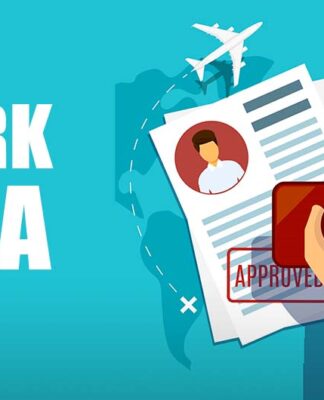BUSINESS
Work culture: Why companies want employees back in the office
Employers that want workers back in the office may want to gain advantages from in-person interaction that cannot be measured by productivity alone.
Worker on the beach
Companies are recalling workers back to offices after more than two years spent at home
Yashovardhan Agrawal is a developer relations specialist. Agrawal has juggled remote work from his home in Prayagraj, India, for multinational companies across three time zones: Singapore, Brazil and the United States.
While he’s worked in-person for companies with offices in Bangalore in the past, Agrawal went full- remote during the COVID pandemic. He claims the change made him more productive.
“I can achieve in two hours at home what might take me four hours in the office,” said Agrawal in an interview with DW.
Despite worker satisfaction with work from home arrangements, many companies are beginning to recall employees back to the office.
Businesses have tools to monitor productivity as employees work online but have a harder time measuring gains made by in-person interaction, explained Roman Briker, an assistant professor in organizational behavior at Maastricht University.
This may be what’s behind the growing call from companies to get employees back in office.
Exposure to management
Tesla CEO Elon Musk, who is known for sleeping at the company’s factories during periods of high production, has been adamant that employees work in the office at least 40 hours per week or risk being terminated.
Person working on computer
The ‘mere exposure effect’ may point to why some companies want a stronger in-office presence
“The more senior you are, the more visible must be your presence,” wrote Musk in an internal email first published on Electrek.
“That is why I lived in the factory so much — so that those on the line could see me working alongside them.”
Sentiments like Musk’s that promote a strong presence in the office may have to do with a phenomenon called the “mere exposure effect,” said Briker.
It suggests that the more individuals are exposed to someone the more you like them. According to Briker increased exposure may generate positive assumptions about workers and management through continued interaction like “these people work harder,” Briker said.
Fostering company culture
The association of in-person interaction with hard work may also be an indicator of a company’s culture, which can influence how adaptable an organization is to remote work.
The culture of a company can be viewed along “tight” to “loose” spectrum, said Briker.
The theory, originally popularized by cultural psychologist, Michelle Gelfand, holds that tight cultures promote supervision and hierarchy.
Wall Street Banks, with tighter cultures defined by high pressure, high-reward work environments have been some of the strongest proponents behind return-to-work mandates.
“Most professionals learn their job through an apprenticeship model, which is almost impossible to replicate in the Zoon world,” said Morgan Stanley CEO, James Gorman, on his return request that workers return to work by September 6. “Over time, this drawback could dramatically undermine the character and culture of the company.”
Goldman Sachs told its US and UK staffers to return to the office by June in 2021.
“…our culture of collaboration, innovation and apprenticeship thrives when our people come together,” wrote the company’s COO and CFO in a message viewed by CNBC.
Loose cultures, however, allow more flexibility and self-supervision. Companies that demonstrate this characteristic might be more willing to accommodate remote or hybrid work, Briker said.
Bonnie Dilber, a recruiting manager who works at Zapier, a fully remote software company, told DW that employees work from home, on patios, and even climbing gyms.
Two people shaking hands
Companies with loose work cultures may be better suited for hybrid work
She credits the company’s flexibility to being “really clear on what the outcome and expectations are for people, and then kind of trusting people and making sure that they have the resources and skills to do it,” Dilber said.
But even the most flexible work environments are still hesitant to give up in-office collaboration.
The sunk cost fallacy
“A lot of companies have invested millions of dollars in campuses prior to the pandemic,” said Dilber. “That’s all kind of being wasted if people aren’t taking advantage of it.”
Google, a company known for offering employees perks to stay in-office as long as possible, began to reconfigure its offices to suit pandemic conditions early last year.
The company worked consultants to construct semi-circular work spaces with screen displays and mobile “team pods,” at around 10% of its global work spaces according to the New York Times.
Google also issued a mandate that its workers return to the office at least 3 days a week by April 2022.
Investment bank JPMorgan announced construction of an all new $3 billion (€3.1 billion) New York City campus in 2018, demolishing its old campus in 2021. The bank’s CEO has also been vocal about his opposition to remote work.
The financial institution was among the first companies to issue a return mandate in September 2020.
JP Morgan Chase logo
JP Morgan tore down its former New York headquarters in 2021
“We want people back to work…and everyone is going to be happy with it,” said CEO Jamie Dimon at the Wall Street Journal CEO Council.
In August this year it was reported that Dillion was pushing senior managers to get workers seats at the office “five days a week.”
Over 44 Fortune100 companies have initiated plans to reduce office space since 2022.
The future of work
Some workers, like Agrawal, see little future in working for companies that place strict requirements on in-person work.
“Pushing me into the office every week might not be the best idea in the world,” he said.
The global average of time spent working from home has normalized at around 1.5 days per week since the start of the pandemic, a study found.
Briker says this is a strong indication that the work from home debate will settle between remote and home — at hybrid work.
Until then, employers will have to negotiate how much they are willing to lose, or gain, from pushing workers into the office.
“We’re seeing a lot of people come to us and apply for roles,” said Dilber about the effects of return-to-work mandates.
“They say my company is returning to the office and that’s just not an option for me anymore,” Dilber said.
Play Video3:38 min
Competition for new staff in the US
Edited by: Hardy Graupner
WWW LINKS
Internal email from Musk to employees
Musk return to work email
Working from Home around the World
Study on working from home around the world
Date 26.09.2022
Author Alexandria Williams
Keywords working from home, remote work, future of work, Tesla, JPMorgan
Feedback: Send us your feedback.
Print Print this page
Permalink https://p.dw.com/p/4H9iX





























